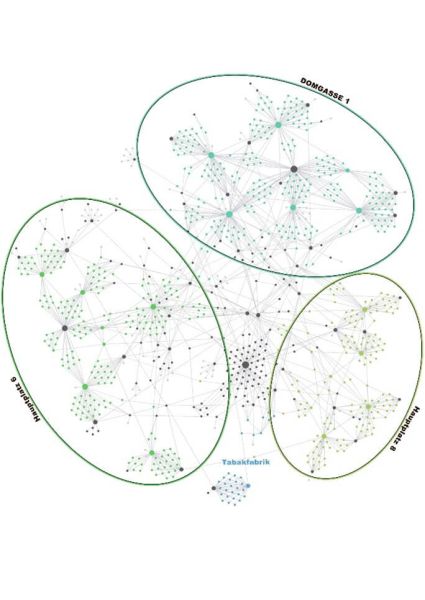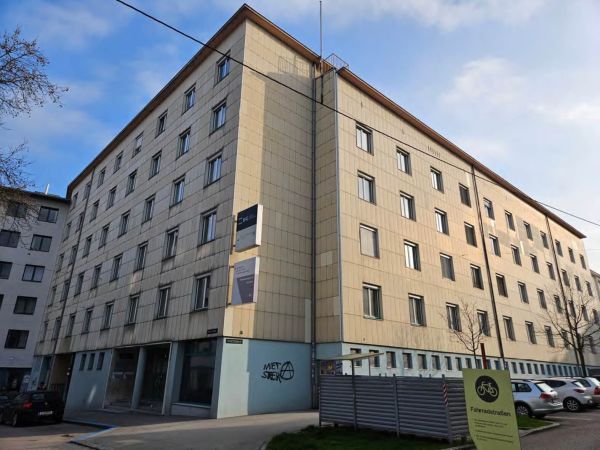Update Prunerstraße - Demonstrative building Prunerstraße 5: climate-neutral transformation of a space programme and an existing building
Short Description
Starting point / motivation
The climate crisis requires comprehensive change. With its educational mission, the University of Art and Design Linz seeks to fulfil its responsibility for sustainable solutions, while BIG aims to use its influence through the management of public properties for the common good. Linz, as a pioneering and climate-conscious city, is striving for climate neutrality and a reduction in land sealing.
The building at Prunerstraße 5, with its 1960s character, has the potential to be developed into a prototype object that meets the current demands for sustainable use of existing structures. Although on the surface, the building may appear to have exceeded its lifecycle, it will be transformed into a demonstrative building using current scientific methods, making it a lighthouse project in the discourse on the conversion potential of existing structures.
At the same time, the creation of exceptional spatial moments and possibilities for use is central to the development of the project, and it is essential that the needs assessment and analysis of the existing structure is carried out openly by all stakeholders.
Contents and goals
It is essential that all stakeholders analyse the existing building and assess requirements with an open mind and keep all the outcomes possible. The model scenarios of this phase 0 therefore do not exclude any option: either comprehensive re-use of the existing building (including parts of the building technology) or partial demolition with new construction or total demolition with re-use of existing components and sustainable CO2-neutral new construction.
The process of assessing requirements and needs (phase 0) provides pioneering impetus by giving equal consideration to university, urban and social requirements. In the process both human-participative and digital tools are used. Existing standards in construction and use are examined and critically challenged, including comfort and furnishings.
A key component of the project is the involvement of various experts, stakeholders and users. Urban society - politics, business and citizens - will also be activated and involved. The building will serve as a real-life laboratory for multifunctional use, strengthen the connection between the university and the city of Linz, create a meeting place and promote the democratic values of an open and sustainable society.
Methods
Digital tools and assessment of space requirements
The University of Art and Design has a solid database of existing room structures. In addition to the administrators (institutes and departments), this includes the room sizes, utilisation and location of the rooms. In the course of sustainable and careful use of resources, the highest possible frequency of use and the lowest possible vacancy rate of existing room resources should have top priority.
For this reason, hybrid use of rooms, also across institutes, should be aimed for. For the development of a room programme for hybrid use, it is therefore necessary to understand the functional relationships between room clusters and the needs of users, to make room potential visible and, if necessary, to organise (re)distribution across institutes.
For this purpose, a separate data structure is being developed which, in addition to the already known parameters (size, location, use, etc.), can include further parameters that are necessary for the overlapping use of space resources - such as room heights, equipment, etc. - and which can visualise similar clusters of use within the departments and institutes in order to enable their grouping and overlapping. The relationships between the spatial resources and their users are just as important as the relationships between the users themselves.
Expected results
The expected outcomes include the development of a consensus-based framework plan as a basis for subsequent planning and construction phases, and the creation of a spatial and functional programme that meets the needs of the various users. The documentation of Phase 0 will ensure that the outcomes are both evaluable and quantifiable and will serve as a guide for potential future projects.
Project Partners
Project management
University of Art and Industrial Design Linz - die architektur
Project or cooperation partners
- BIG (Bundesimmobiliengesellschaft m.b.H)
- Landeshauptstadt Linz - Geschäftsbereich Planung, Technik und Umwelt
- Technische Universität München School of Engineering and Design
- Technical University of Vienna - Institut für Architekturwissenschaften
Contact Address
die architektur
Michael Rieper
Hauptplatz 6
A-4020 Linz
Tel: +43 (732) 7898 - 2561
E-mail: michael.rieper@kunstuni-linz.at
Web: kunstuni-linz.at/baukultur




